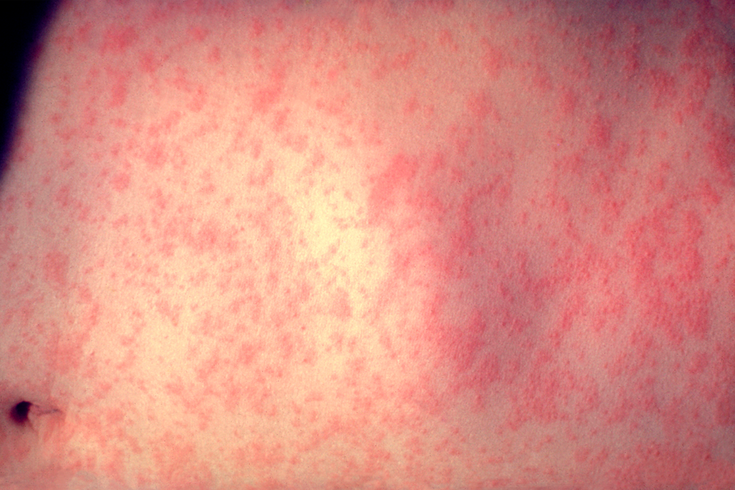
April 22, 2019
 Dr. Heinz F. Eichenwald/CDC
Dr. Heinz F. Eichenwald/CDC
A skin rash on a patient's abdomen three days after the onset of a measles infection.
The number of measles cases diagnosed this year in the United States likely will surpass the highest total in at least 25 years, according to the U.S. Centers for Disease Control and Prevention.
Another 71 measles cases were diagnosed last week, bringing the national total to 626 individual cases. That figure marks the second-highest number of cases since 1994, when the U.S. totaled 963 cases.
Since then, only the 667 cases reported in 2014 were higher – and there are still eight months left in the year. CDC officials anticipate surpassing that figure in the coming weeks.
Measles cases have been reported in 22 states, including New Jersey. Most of the cases stem from New York, where measles outbreaks particularly have affected unvaccinated members of Orthodox Jewish communities in Brooklyn and and Rockland County.
Thanks to vaccinations, the disease was considered eradicated in the U.S. back in 2000. But measles outbreaks can still occur when international travelers contract the disease and return to the U.S.
That is the case with the current outbreaks, which have been linked to travelers returning from other countries where large outbreaks are occurring, including Israel, according to the CDC. It can spread quickly when it reaches communities where significant portions of people are unvaccinated. Most people who got measles were not vaccinated.
Measles – a highly contagious virus that lives within the nose and throat mucus – spreads through coughing and sneezing.
The disease is so contagious that up to 90 percent of the people close to an infected person will become infected – if they have not been immunized, according to the CDC. The virus can live for up to two hours in the airspace where an infected person sneezed or coughed.
Symptoms typically appear about 7 to 14 days after a person is infected. They include a high fever, cough, runny nose and red, watery eyes. Several days later, tiny, white spots may appear inside the mouth. Additionally, a rash will develop, beginning on the face and spreading downward.